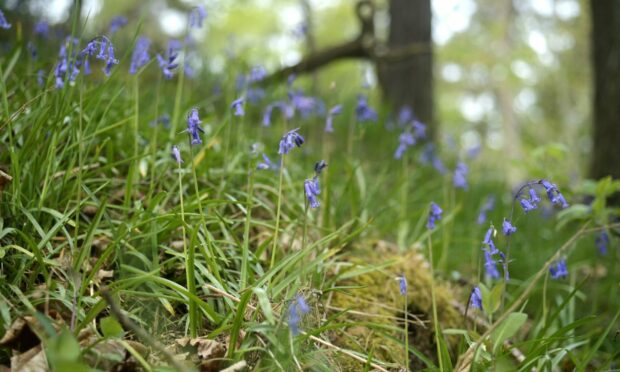Around half of the world’s bluebells are found in the UK and they are at their peak this week.
So where are the best places near Inverness to enjoy them?
Our Top 6 bluebell sites near Inverness
Abriachan Wood. Set in the great Glen, the wood covers a three mile stretch of the north-western shore of Loch Ness between Drumnadrochit and Inverness.
Fairy Glen, Rosemarkie. Run by RSPB, the nature reserve is an important site for wildlife.
The glen is carpeted with wild flowers such as lesser celandine, primrose, wood sorrel and wood anemone as well as bluebells.
Dunain Community Woods in Inverness are managed for the benefit of the community, in particular for education, training and recreation, providing open access for local people.
On the banks of Loch Ness, Urquhart Bay is one of the best examples of surviving ancient wet woodland in Europe.
Tree species include alder, ash, bird cherry and white willow and footpaths form a rough figure of eight through the centre of the wood.
Also near Loch Ness is Balmacaan Wood which is part of a major concentration of ancient woodlands and makes a picturesque backdrop to Drumnadrochit.
Cawdor Wood has remnants of ancient oakwood with a mix of tree species and many rare lichens and wildflowers, including bluebells.
It hosts a diversity of native and migrant birds including capercaillie and waxwings
Bluebells develop slowly – each plant takes between five and seven years to flower from seed.
They must soak up all the energy they need from the sun in just a few weeks before they are overtaken by other plants and shaded over when trees are in full leaf.
Avoid trampling on bluebells
Woodland Trust Scotland is appealing to people to avoid trampling on the plants and keep to paths as they enjoy them over the next few weeks.
Once the leaves are damaged the bulbs will no longer be able to store food, meaning they are less able to produce flowers the following year.
Meanwhile, the trust is calling on the government to help the blooms spread as new native woodlands are created.
The trust says there is a lack of ground flora in new woodlands and wants to see grants for new native woodland include a component to help the wider ecosystem and not just the trees.
A spokesman said: “When native woods are planted on a site with no existing woods nearby it can take decades or even centuries for much-loved native woodland plants such as dog violet, bluebells, wild garlic and primroses to move in.
“We would like to see future grants paying, not just to plant trees, but some of the main wild flowers too.
“It would only need a small area in each new wood to be planted to rapidly speed up the process.”
Related stories
How will this house help work to save Scotland’s rare and threatened rainforest?
Are you interested in all the latest news and updates from Inverness? If so, why not join our new Facebook group.



Conversation